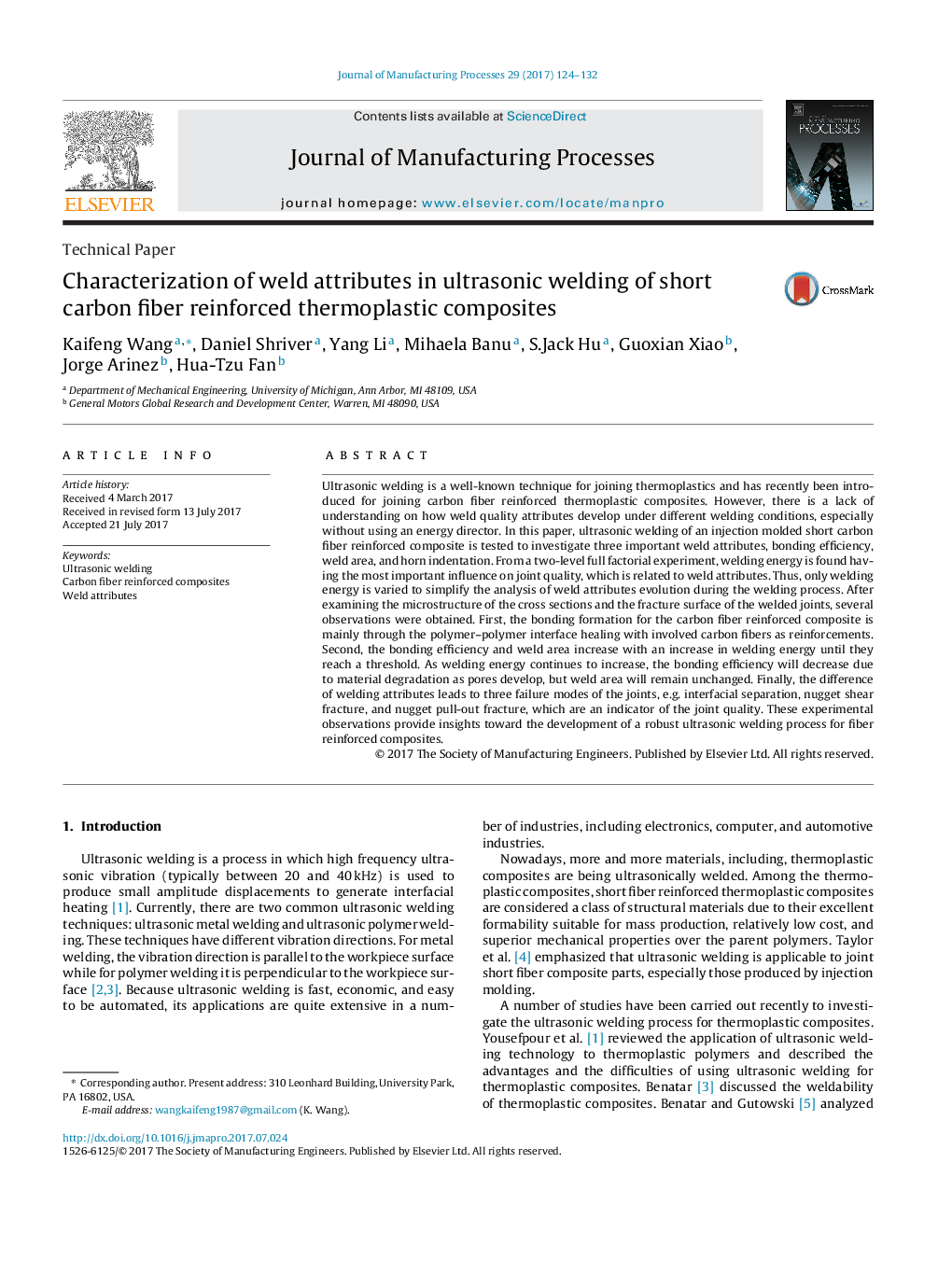| Article ID | Journal | Published Year | Pages | File Type |
|---|---|---|---|---|
| 5469162 | Journal of Manufacturing Processes | 2017 | 9 Pages |
Abstract
Ultrasonic welding is a well-known technique for joining thermoplastics and has recently been introduced for joining carbon fiber reinforced thermoplastic composites. However, there is a lack of understanding on how weld quality attributes develop under different welding conditions, especially without using an energy director. In this paper, ultrasonic welding of an injection molded short carbon fiber reinforced composite is tested to investigate three important weld attributes, bonding efficiency, weld area, and horn indentation. From a two-level full factorial experiment, welding energy is found having the most important influence on joint quality, which is related to weld attributes. Thus, only welding energy is varied to simplify the analysis of weld attributes evolution during the welding process. After examining the microstructure of the cross sections and the fracture surface of the welded joints, several observations were obtained. First, the bonding formation for the carbon fiber reinforced composite is mainly through the polymer-polymer interface healing with involved carbon fibers as reinforcements. Second, the bonding efficiency and weld area increase with an increase in welding energy until they reach a threshold. As welding energy continues to increase, the bonding efficiency will decrease due to material degradation as pores develop, but weld area will remain unchanged. Finally, the difference of welding attributes leads to three failure modes of the joints, e.g. interfacial separation, nugget shear fracture, and nugget pull-out fracture, which are an indicator of the joint quality. These experimental observations provide insights toward the development of a robust ultrasonic welding process for fiber reinforced composites.
Related Topics
Physical Sciences and Engineering
Engineering
Industrial and Manufacturing Engineering
Authors
Kaifeng Wang, Daniel Shriver, Yang Li, Mihaela Banu, S.Jack Hu, Guoxian Xiao, Jorge Arinez, Hua-Tzu Fan,
